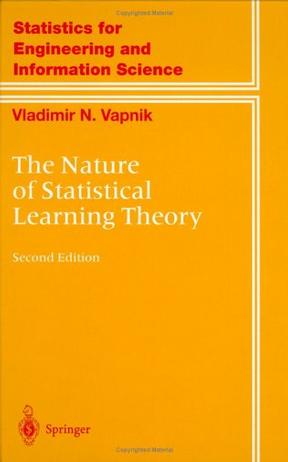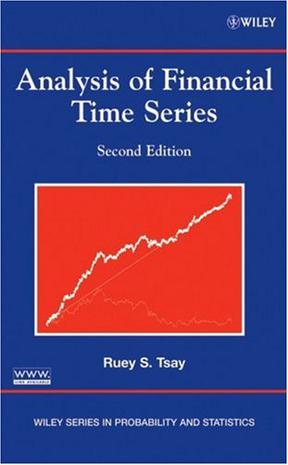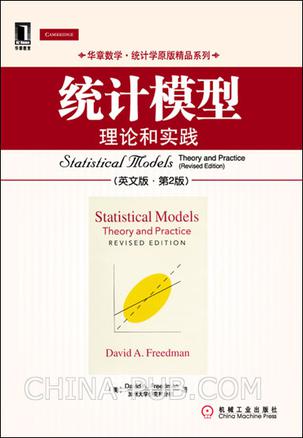-

Time Series Analysis
A modernized new edition of one of the most trusted books on time series analysis. Since publication of the first edition in 1970, Time Series Analysis has served as one of the most influential and prominent works on the subject. This new edition maintains its balanced presentation of the tools for modeling and analyzing time series and also introduces the latest developments that have occurred n the field over the past decade through applications from areas such as business, finance, and engineering. The Fourth Edition provides a clearly written exploration of the key methods for building, classifying, testing, and analyzing stochastic models for time series as well as their use in five important areas of application: forecasting; determining the transfer function of a system; modeling the effects of intervention events; developing multivariate dynamic models; and designing simple control schemes. Along with these classical uses, modern topics are introduced through the book's new features, which include: A new chapter on multivariate time series analysis, including a discussion of the challenge that arise with their modeling and an outline of the necessary analytical tools New coverage of forecasting in the design of feedback and feedforward control schemes A new chapter on nonlinear and long memory models, which explores additional models for application such as heteroscedastic time series, nonlinear time series models, and models for long memory processes Coverage of structural component models for the modeling, forecasting, and seasonal adjustment of time series A review of the maximum likelihood estimation for ARMA models with missing values Numerous illustrations and detailed appendices supplement the book,while extensive references and discussion questions at the end of each chapter facilitate an in-depth understanding of both time-tested and modern concepts. With its focus on practical, rather than heavily mathematical, techniques, Time Series Analysis , Fourth Edition is the upper-undergraduate and graduate levels. this book is also an invaluable reference for applied statisticians, engineers, and financial analysts. 点击链接进入中文版: 时间序列分析:预测与控制 -

Introducing Monte Carlo Methods with R (Use R)
Computational techniques based on simulation have now become an essential part of the statistician's toolbox. It is thus crucial to provide statisticians with a practical understanding of those methods, and there is no better way to develop intuition and skills for simulation than to use simulation to solve statistical problems. Introducing Monte Carlo Methods with R covers the main tools used in statistical simulation from a programmer's point of view, explaining the R implementation of each simulation technique and providing the output for better understanding and comparison. While this book constitutes a comprehensive treatment of simulation methods, the theoretical justification of those methods has been considerably reduced, compared with Robert and Casella (2004). Similarly, the more exploratory and less stable solutions are not covered here. This book does not require a preliminary exposure to the R programming language or to Monte Carlo methods, nor an advanced mathematical background. While many examples are set within a Bayesian framework, advanced expertise in Bayesian statistics is not required. The book covers basic random generation algorithms, Monte Carlo techniques for integration and optimization, convergence diagnoses, Markov chain Monte Carlo methods, including Metropolis {Hastings and Gibbs algorithms, and adaptive algorithms. All chapters include exercises and all R programs are available as an R package called mcsm. The book appeals to anyone with a practical interest in simulation methods but no previous exposure. It is meant to be useful for students and practitioners in areas such as statistics, signal processing, communications engineering, control theory, econometrics, finance and more. The programming parts are introduced progressively to be accessible to any reader. -

Introductory Statistics with R
This book provides an elementary-level introduction to R, targeting both non-statistician scientists in various fields and students of statistics. The main mode of presentation is via code examples with liberal commenting of the code and the output, from the computational as well as the statistical viewpoint. Brief sections introduce the statistical methods before they are used. A supplementary R package can be downloaded and contains the data sets. All examples are directly runnable and all graphics in the text are generated from the examples. The statistical methodology covered includes statistical standard distributions, one- and two-sample tests with continuous data, regression analysis, one-and two-way analysis of variance, regression analysis, analysis of tabular data, and sample size calculations. In addition, the last four chapters contain introductions to multiple linear regression analysis, linear models in general, logistic regression, and survival analysis. -

The Nature of Statistical Learning Theory
The aim of this book is to discuss the fundamental ideas which lie behind the statistical theory of learning and generalization. It considers learning as a general problem of function estimation based on empirical data. Omitting proofs and technical details, the author concentrates on discussing the main results of learning theory and their connections to fundamental problems in statistics. This second edition contains three new chapters devoted to further development of the learning theory and SVM techniques. Written in a readable and concise style, the book is intended for statisticians, mathematicians, physicists, and computer scientists. -

Analysis of Financial Time Series
-

统计模型
《统计模型:理论和实践(英文版·第2版)》内容简介:Some books are correct. Some are clear. Some are useful. Some are entertaining. Few are even two of these. This book is all four. Statistical Models: Theory and Practice is lucid, candid and insightful, a joy to read. We are fortunate that David Freedman finished this new edition before his death in late 2008. We are deeply saddened by his passing, and we greatly admire the energy and cheer he brought to this volume——and many other projects——-during his final months.